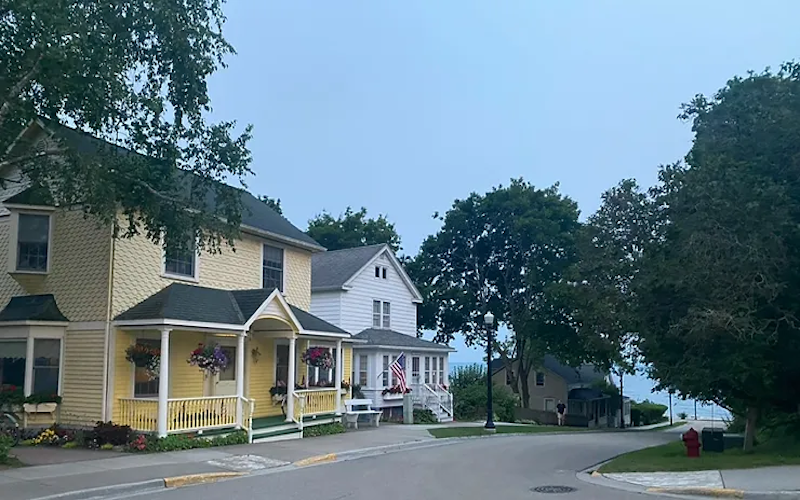My Village Life
I grew up in a literal village of 900 people with one stoplight and no grocery store. My senior graduation consisted of mostly the same people I went to preschool with. Yes, everyone knew each other, and many of the same families had lived there for generations. Most of the community, my friends included, held very different political and religious beliefs from my family, who were newcomers to the town. Growing up this way has shaped my worldview in countless ways and is a big part of why I am passionate about sharing what I know about conflict resolution.
In a town as small as mine, relationships are built on everyday relationships and support that villages often necessitate. We lend tools, help with house and yard work, and borrow sugar. When I was growing up, it was common for a neighbor to walk right through the front door to say “hi” because they were in the neighborhood or stop by to ask for something. Our doors were always open, and I never owned a house key. In a village of 900, a lot of people are involved in local politics, and the impact of my vote felt tangible in the community.
Our Loss of Connection
Recently, I was listening to an episode of my new favorite podcast,
The Gray Area, called “
The cost of spending time alone.” The host, Sean Illing, spoke to Derek Thompson about his article in the Atlantic, “
The Anit-Social Century” (do go read Thompson’s article!). They discussed the growing anti-social tendencies Americans have—not loneliness, but a declining desire for connection, fueled by the convenience of technology. But this isn’t a rant against technology; rather, it’s an illustration of how growing up in a small village instills tolerance.
My ears perked up as they talked about the three rings of connection: Family, Tribe, and Village. The inner ring, Family, provides intimacy and teaches us love, with technology helping to maintain these bonds across distance and time. The outer ring, Tribe, connects us to those who share our affinities and teaches us loyalty—again, something that technology facilitates. But the middle ring, Village, is the bond we build with our local communities, including those who don’t necessarily share our opinions. The Village is where we learn tolerance.
The podcast discussion continued, emphasizing how technology enables social connection, but primarily within the bubbles of Family and Tribe. We no longer have to practice tolerance, and tolerance is hard. So we avoid it. And by avoiding it, we lose the ability to engage with people who think differently. As a result, our political beliefs align with our family and tribes, often at the expense of engaging with the realities of our local communities—the places where we actually have the most influence.
Because it’s at the local level where you feel the impact of politics most directly. It’s where your voice, your vote, and your relationships hold the most weight.
A Tale of Two Neighbors
My parents still live in the same town. Their neighbors on each side hold opposing political views, and those affiliations are both visible and well known. The neighbors to the south are longtime family friends. My parents regularly cook for them, help out when needed, and take one of them to chemotherapy appointments. Their relationship as neighbors comes first. They show each other tolerance and, in doing so, they build a sense of community.
The neighbor to the north, however, has been harassing my parents for years—hurling contemptuous insults, threatening physical harm, and creating an ongoing state of fear and hostility. His lack of tolerance has isolated him from the whole community.
Building Community through Connection
As entrenched divisions grow in this country, I find myself reflecting more on my upbringing and its increasing value to me—both personally and professionally. Though challenging at times, this experience has fueled my commitment to helping others see one another as fellow humans first, because that is how small, isolated communities function. In my work as a mediator, I draw from these experiences, approaching people with curiosity about what’s motivating them. I help them reflect on their needs and interests, highlight common ground, and ensure they feel heard and understood. This process fosters not just resolution, but a deeper sense of connection and mutual respect, much like the village mindset I grew up with.
We can’t force people into a village, but we can practice connecting in our local communities. If we don’t get out of our homes to connect face to face with people, we will not see the mutual ground we stand on, and we more easily turn our neighbors into ‘the other.’ Technology makes connection easier in some ways, but it also makes avoiding people easier. AI and digital tools can help us stay connected, but they also make it easier to stay in our bubbles. They can’t replace the depth of in-person connection—the trust that forms when you share space with someone, hear their voice, and see their expressions. Real understanding happens in person.
So start engaging locally, being willing to tolerate discomfort, and recognizing that building community—especially across differences—is a skill worth holding onto.


 Introductions - Members Only
Introductions - Members Only The 3-Part LinkedIn Blueprint to Crush It
The 3-Part LinkedIn Blueprint to Crush It Women Belong Book Club: Revenge of the Tipping Point
Women Belong Book Club: Revenge of the Tipping Point Women Belong Progressive Networking Lunch - Chicago
Women Belong Progressive Networking Lunch - Chicago Connections - Online Networking Event
Connections - Online Networking Event